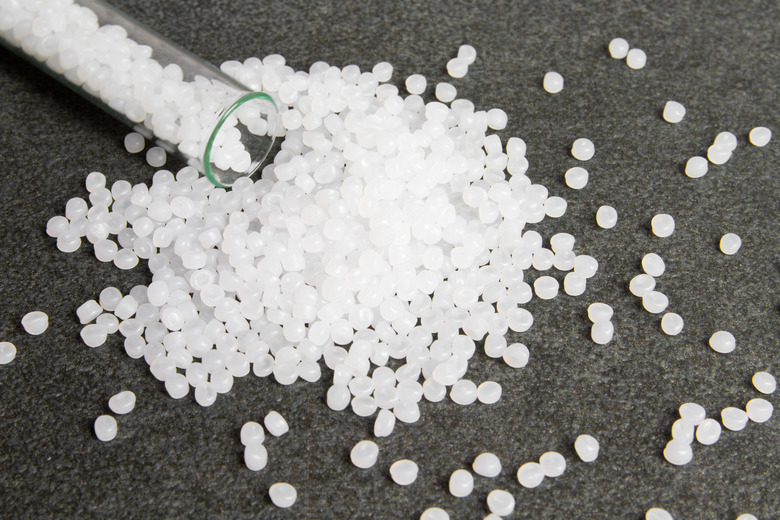High Density Polyethylene Manufacturing Process
Description
Description
High density polyethylene (HDPE) is a long-chain polymer or plastic. Polyethylene is the most common form of plastic in the world and can be processed in a number of ways to make it thin, flexible, fluffy or strong and hard such as with HDPE. HDPE is primarily used for wood-plastic composites such as plastic lumber. It is also blow molded to make plastic bottles, such as soda bottles.
Production
Production
Production of wood-plastic composites is the most common form of HDPE manufacture. The process starts with three large heated holding tanks. The primary tank contains a natural gas derivative called ethane. Ethane is heated to well above boiling point and is then pumped into a mixing tank. From the other tank comes benzene, which, when combined with UV radiation from overhead lamps, serves to act as a chemical for the polymerization of the ethane. This is, for all intents and purposes, how polyethylene is made, but how it is treated next is what makes it high density polyethylene. The chemical is pumped into a series of wide, shallow board-like metal troughs. Instead of being allowed to cool, the chemical is cooked at a low heat to allow for the release of captured air and oxygen. From here, the troughs drain into a series of upright metal molds which contain shredded wood fiber. Once allowed to cool for roughly eight hours, the HDPE boards can be shipped to retailers and wholesalers.
Bottle Blow Molding
Bottle Blow Molding
Blow molding is identical to the production of wood-plastic boards up to the point that the HDPE drains from the sitting troughs. It is kept in an air-tight heated tank, where a valve puts measured dollops of it onto the heads of a series of air compressors. Each compressor fits into a metal mold shaped like a bottle. While the compressor pours air into the mold, ballooning out the HDPE into the mold, another compressor functions to pump air out of the mold so the HDPE fits perfectly. A circular razor cuts the excess plastic from the head of the air compressor, which then undergoes an acid bath and a separate water bath to clean it of any remaining residue for the next use. The end of the cooling HDPE, which by now has the consistency of putty, is stamped in the shape of the bottle's mouth and screw top. When it's cooled entirely, the mold splits in half to drop the plastic bottle into a hopper, where live workers clean it and buff off any edges or imperfections on the bottle.
Cite This Article
MLA
Albers, John. "High Density Polyethylene Manufacturing Process" sciencing.com, https://www.sciencing.com/high-density-polyethylene-manufacturing-process-5591660/. 31 October 2009.
APA
Albers, John. (2009, October 31). High Density Polyethylene Manufacturing Process. sciencing.com. Retrieved from https://www.sciencing.com/high-density-polyethylene-manufacturing-process-5591660/
Chicago
Albers, John. High Density Polyethylene Manufacturing Process last modified March 24, 2022. https://www.sciencing.com/high-density-polyethylene-manufacturing-process-5591660/
